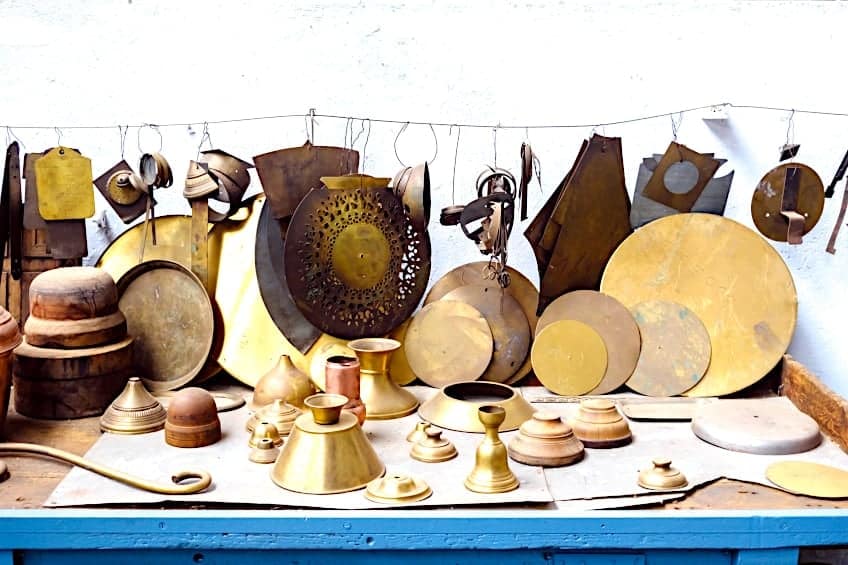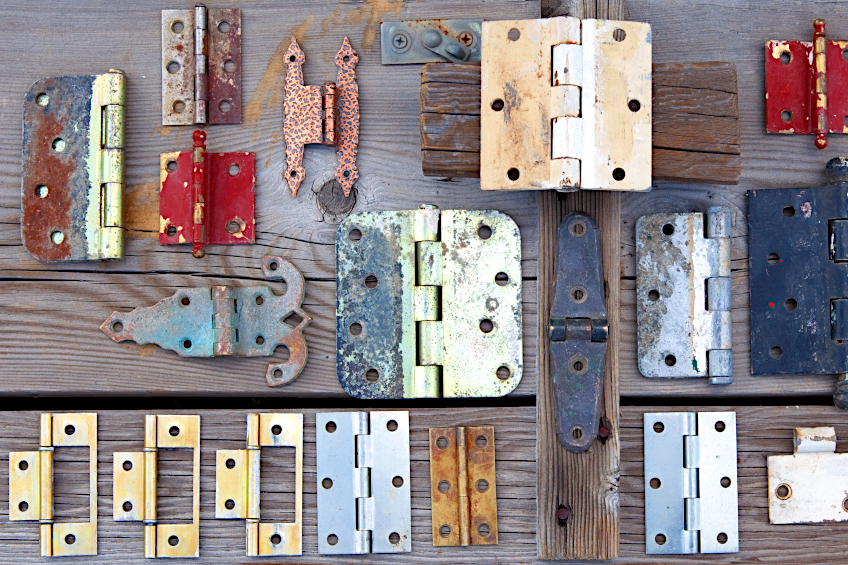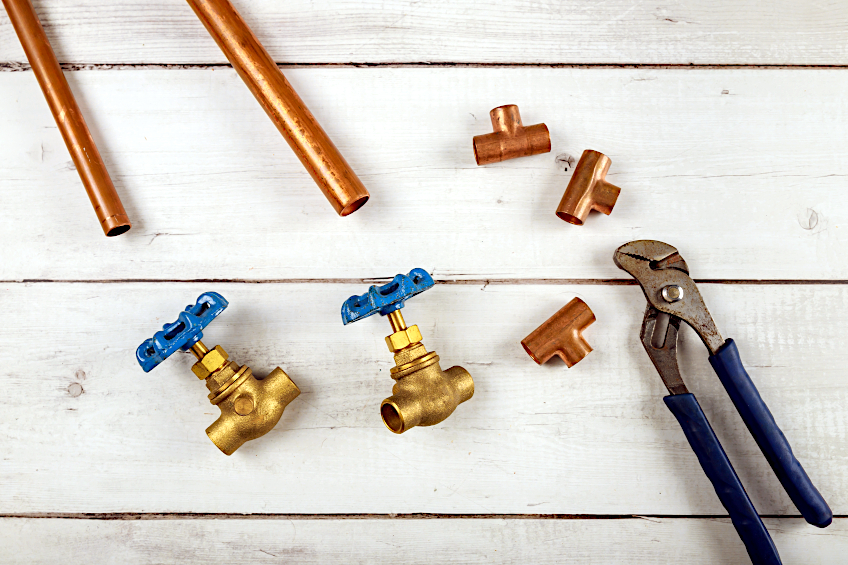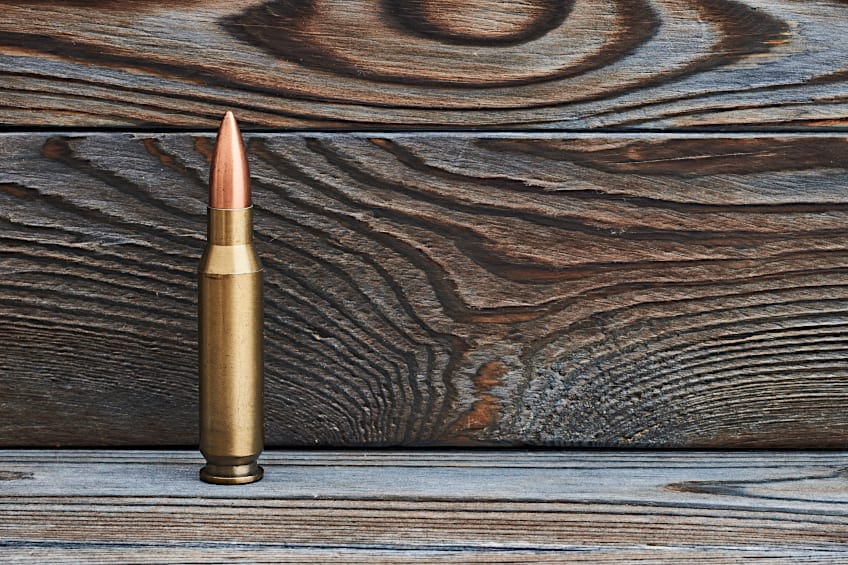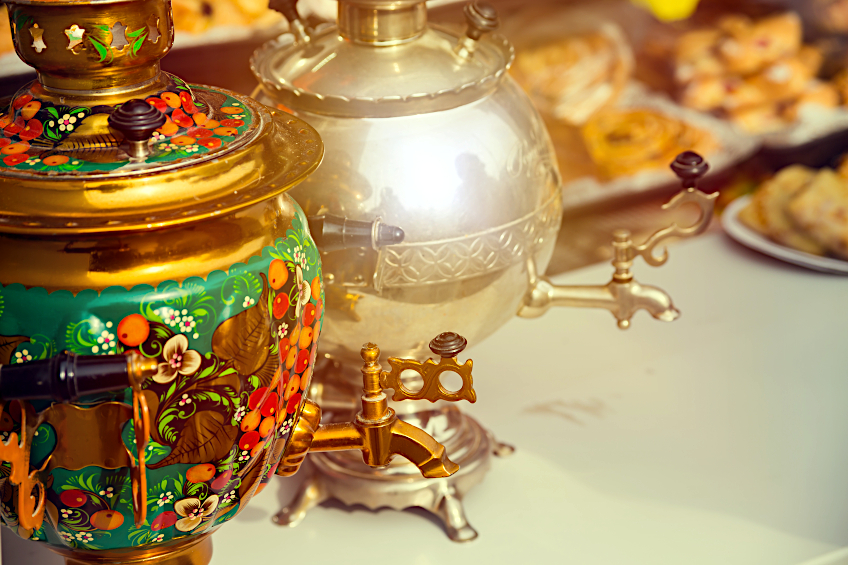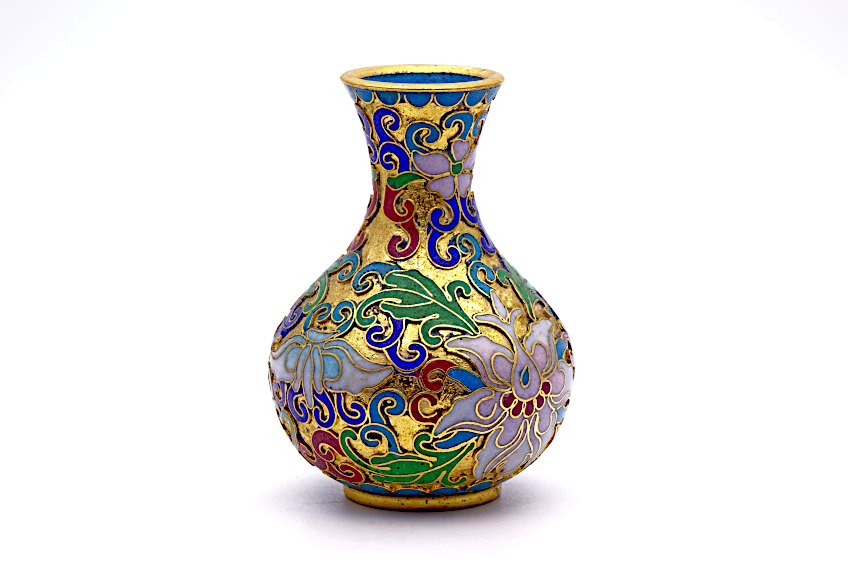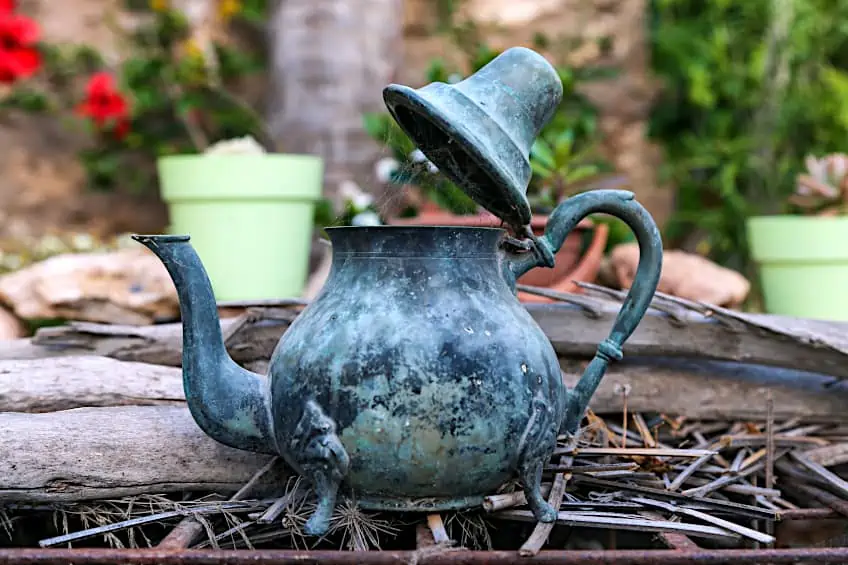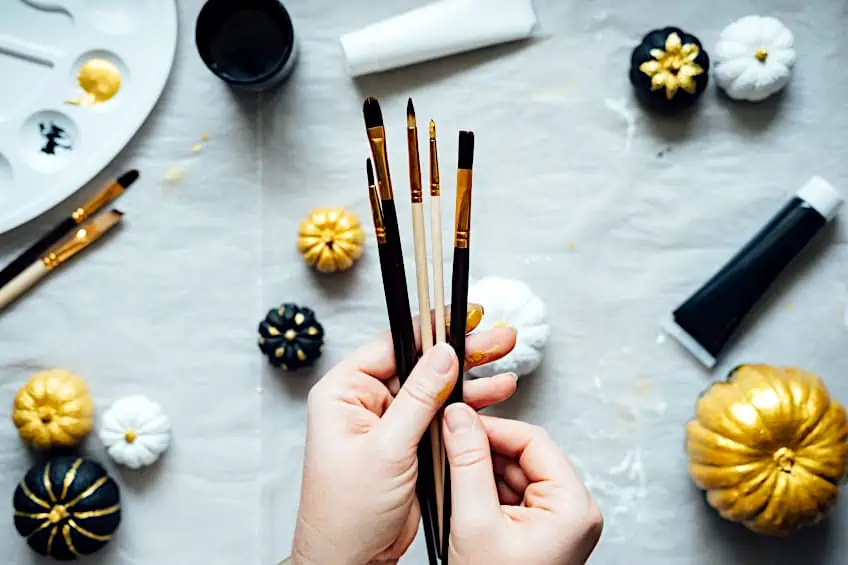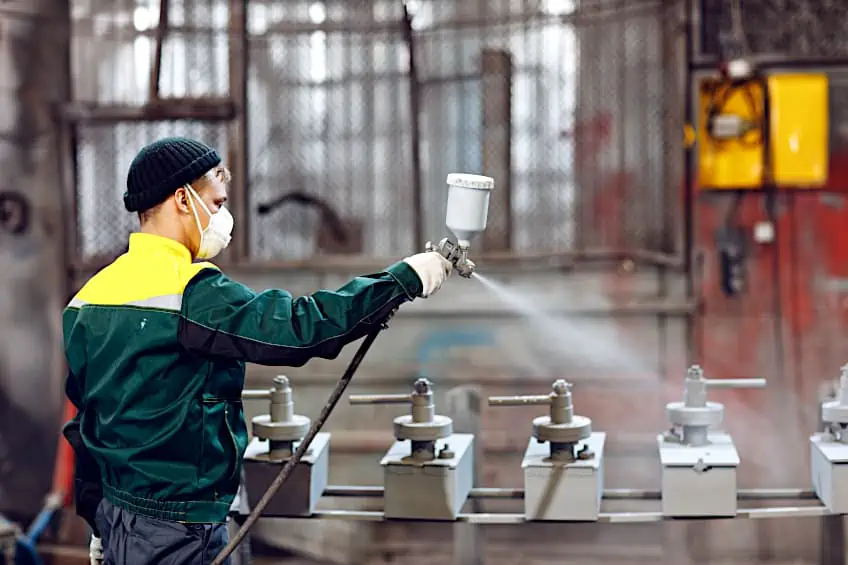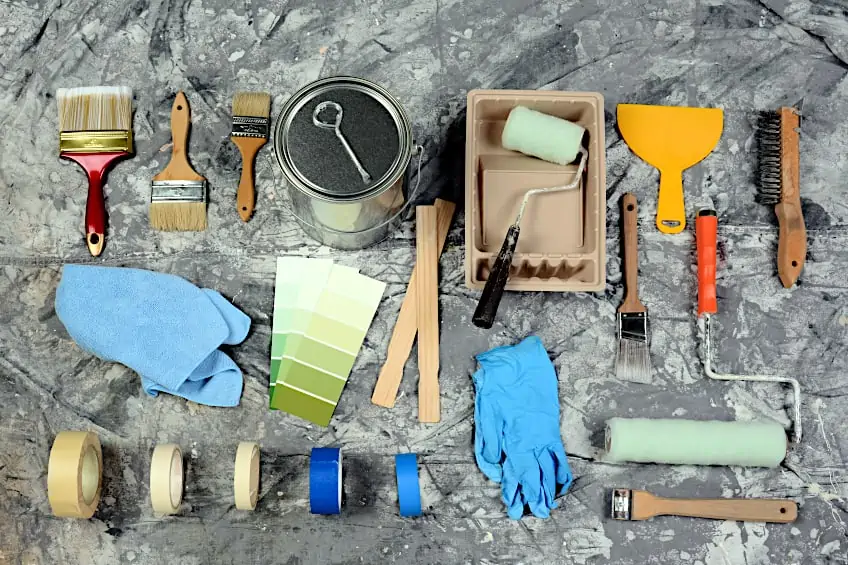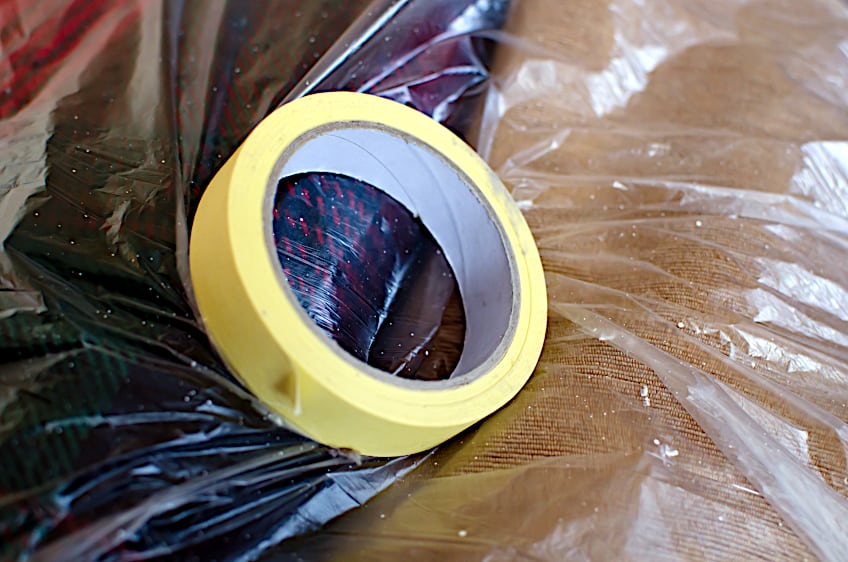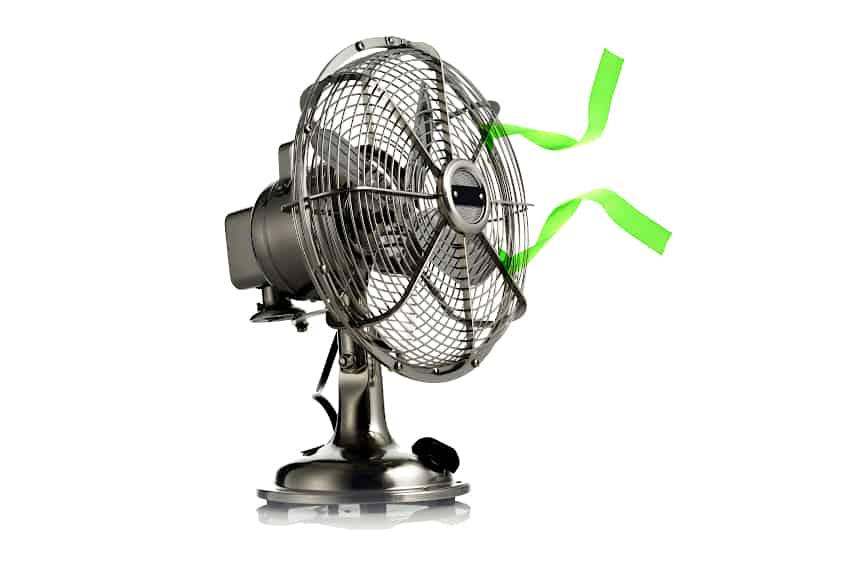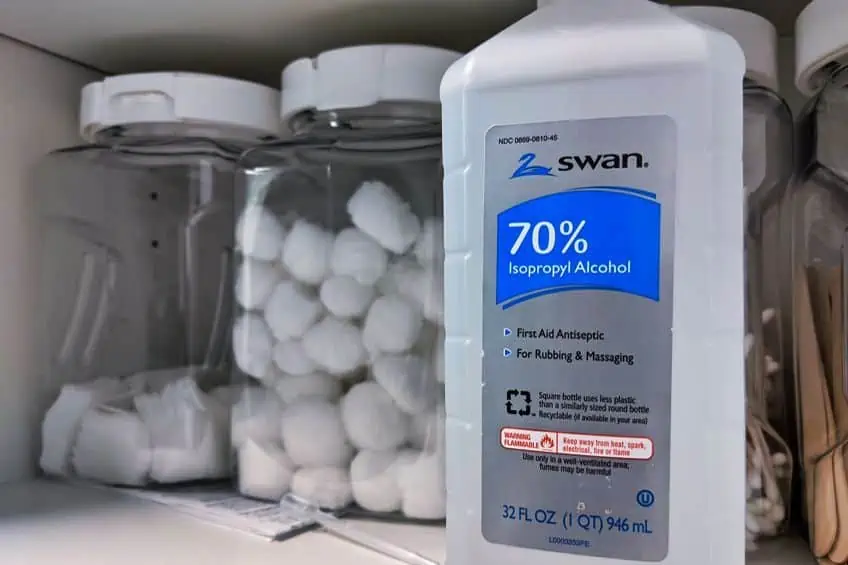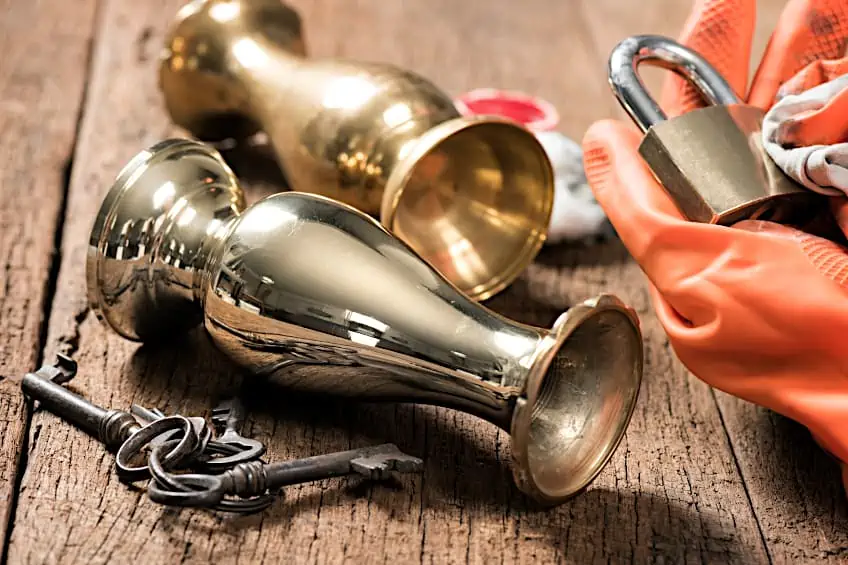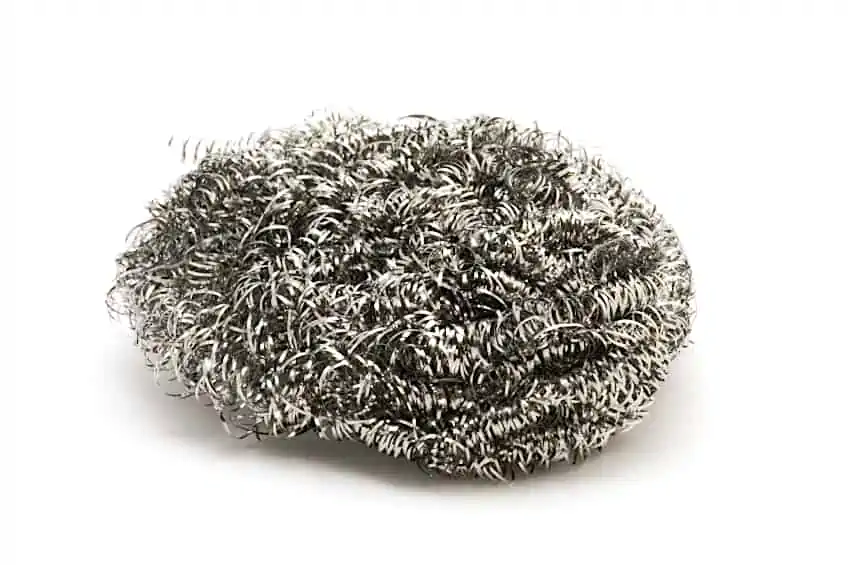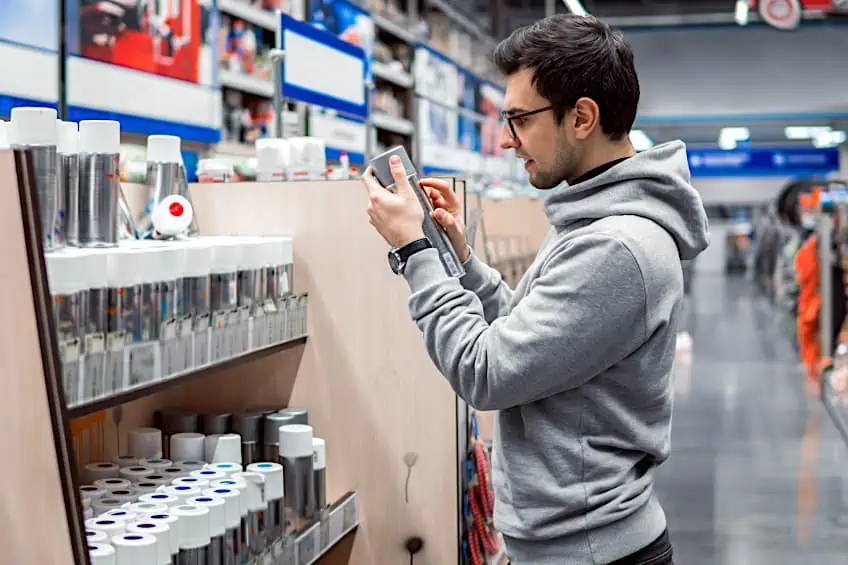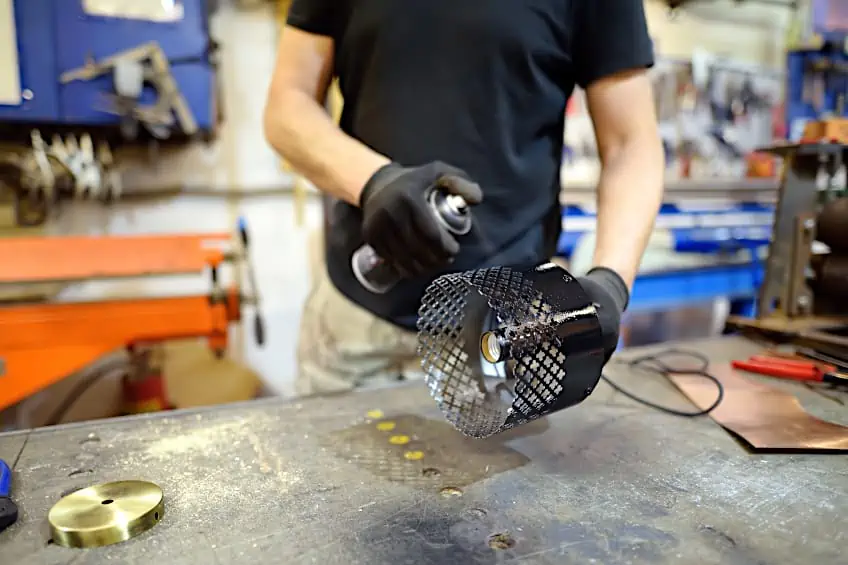How to Paint Brass – Tips for Painting Non-Ferrous Metals
This post may contain affiliate links. We may earn a small commission from purchases made through them, at no additional cost to you. You help to support resin-expert.com
Brass has been around for thousands of years. When copper was first discovered, our ancestors discovered that if it was mixed with other elements like zinc, they could create a metal that was easy to work with and didn’t deteriorate very easily. What’s better than a metal that isn’t easily tarnished, relatively easy to come by, inexpensive, and easy to work with? It’s pretty safe to say that early humans thought they hit the jackpot, and even though there wasn’t a “brass age” the same way there was a bronze and iron age, this metal did become pretty popular at one point. This being said, brass is used for a wide variety of applications in modern society, so let’s have a look at a few of them, as well as how to paint brass workpieces effectively.
Table of Contents
What Is Brass Used For?
What is brass used for? In modern society, brass is used for a number of unassuming applications that would cause other metals to wear out and inevitably fail. This is because brass doesn’t produce a lot of friction and is therefore used in applications where repetitive mechanical motions are commonplace.
This, as well as the fact that brass is easy to maintain, makes it a kind of unsung hero of modern society.
What exactly is brass used for, though? Well, for starters, brass is used to create locks. Not only the body of the lock, but the actual locking mechanism, pins, and tumblers can be made of brass. Why? Well, locks tend to be forgotten about until they need to be used, and since loads of locks are left outdoors to secure sheds and entry gates, it makes sense that brass is used as it doesn’t rust or deteriorate easily.
Besides securing doors, brass is also used to create door hinges. Unless they’re squeaking or broken, the chances are that you don’t think about your door hinges much, therefore most door hinges aren’t maintained very often, if ever.
Brass is capable of handling the weight of your door and the repetitive mechanical operation of opening and closing it hundreds of thousands of times without failing.
What else is brass used for besides opening and closing things? Well, this depends on the industry. Brass is often used to make bearings for large and small mechanical devices. Why? Well, brass is a low-friction metal, and since it contains no iron, it can absorb and displace heat pretty well. It also requires relatively little lubrication, which is ideal for production machinery.
Brass alongside copper is also a staple in the plumbing industry.
One place that you might not expect to find brass is in firearms considering all the modern carbines and other synthetic materials used in their production. It probably isn’t in the place you expect, especially if you’re not familiar with firearms. Brass casings are used in the production of modern ammunition, so you could say that brass is extremely valuable to at least one industry.
Brass can be found in many other applications and industries too. For example, you can find brass in the clothing zippers, the couplings for hose clamps, the production of planetary gear systems, door handles, mechanical valve trains, and even in contact points for electrical plugs!
To say that brass is a versatile metal would be a bit of an understatement.
Can You Paint Brass?
Can you paint brass? Considering the advancements in paint technology, you’d be hard-pressed to find a material that cannot be painted, or spray painted these days. This being said, it is entirely possible to paint brass, either for decorative or functional purposes.
For example, while most gate valves are brass, and their handwheels are conventionally always painted either blue or red to indicate the temperature of the water.
Traditionally color was applied to brass and other metal objects using a technique called Cloisonné, where a vitreous enamel powder is applied to recesses in the metal in a paste form, and is then baked in a kiln. This is a laborious and expensive process, but thankfully, modern advances in paints and coatings has made it possible to decorate brass with ease.
Like other non-ferrous metals, brass different from the usual steel and iron surfaces you may paint on a regular basis, and therefore extra care needs to be taken when painting or treating it. Why? Well, brass doesn’t have any iron content and is created by adding zinc to copper to provide extra rigidity to the metal. This means that it can be tricky to work with, especially if you’ve never coated brass before. Exposure to air causes brass to oxidize, resulting in a thin layer of material on the surface of the metal.
Since you want your paint to adhere directly to the metal instead of the oxidized layer, it is essential to remove this layer from the surface of the brass before you paint it.
What special precautions need to be taken when working with brass though? Well, you could start off by using a special primer that not only prepares the workpiece but roughens up the surface a bit to ensure proper adhesion. Brass can also be pretty malleable in some instances, so you need to work carefully when sanding the surface during the preparation process.
What Kind of Paint Works on Brass?
Since brass isn’t like most metals, you might be asking yourself what kind of paint works on brass. Well, at the end of the day, even though it has a unique composition, brass is still a metal and therefore most paint types that work on metal will work on brass as well. What kind of paint works on metal, you ask? Well, most exterior paints and metal-specific paints work on metal.
Enamel paint is one of the most popular choices when it comes to painting metal because it has a good finish and isn’t really affected by things like heat and friction. It also takes to metal surfaces really well, which is why it’s used to coat things like automotive engines and industrial railings.
Can you spray paint brass with other types of paint though? Sure, there are loads of other paint types that work on brass. One of them is oil-based paint, but then again oil-based paints are good for painting most hard-wearing and/or exterior surfaces. Oil-based paints bond with metal surfaces really well, and provide a smooth, sheen finish once cured.
Can you spray paint brass with acrylic paint? Yes, you can! Acrylic is another one of those “do anything” paint types that can be used on virtually any material you can think of, with a few exceptions. Exterior acrylic paint dries and adheres to brass much in the same way that enamel paint does, although enamel paint tends to be more durable.
Can you spray paint brass with any other type of paint? Sure, there are loads of specialized paints out there that you can use to paint brass. There are all-purpose and heavy-duty metal paints on the market designed for industrial use that will do a pretty good job coating brass, although they can vary in effectiveness depending on the brand and quality.
How to Paint Brass
Now that you know that brass can be painted, we thought it would be a good idea to show you how to paint brass. Remember that when spray painting anything the most important step is the preparation of your workpiece so be sure to take your time and to ensure that your workpiece is clean before applying any coating to it. Here are a few things you will need:
- Spray paint of your choice
- Self-etching primer
- Some steel wool
- Clean cloths
- Gloves
- A respirator mask
- Some eye protection
- Painter’s tape
- A tarp or some old newspaper
Prepare Your Workspace
Well, knowing where all of your tools are that your workspace is protected can save you loads of time and give you a degree of peace of mind during the painting process. What should you do to prepare your workspace though? Well, you could start by ensuring that you have a tarp, or some old newspaper laid down on both the floor of your work area and the top of your worktable. This will ensure that any stray droplets of paint won’t get on your floor or stain the top of your worktable.
If you’re using a newspaper, we highly recommend you secure it with some painter’s tape to prevent it from moving while you’re working.
Finally, ensure that your workspace is well-ventilated and that you know where all of your tools are. For ventilation, ensure that you have a flow of air in your workspace if you aren’t working outdoors. In order to make your tools a bit easier to find, ensure that they’re all placed on the side of your dominant hand, including your paint, cloths, primer, and steel wool.
What about you? Well, we recommend you paint your brass workpiece with spray paint as using conventional paint can get pretty messy and time-consuming. Since you will be using spray paint ensure that you’re wearing gloves, a respirator mask, and some eye protection.
Next, double-check yourself and your environment before moving on to the next step in the process.
Prepare Your Workpiece
Preparing your workpiece is half the work when it comes to doing a good paint job. One of the first steps you should take when painting anything is ensuring that surface is as clean as humanly possible.
What is the best way to clean a brass workpiece, you ask?
Well, you could use soap and water (and some good old-fashioned elbow grease) but if you’re in the mood for a spotless surface you could use some isopropyl alcohol. All you need to do is get some on a clean cloth and rub your workpiece with it.
You should notice all of the particles on the cloth once you’re done, and your workpiece might even have a slight shine to it when you’re done!
Next, grab your steel wool. Brass is a fairly easy metal to rough up so preparing the surface with some steel wool or sandpaper should be pretty easy. For this step, you might want to remove the workpiece from its mounted position as it makes it easier to manage, regardless, ensure that the entire surface has a rough texture to it once you’re done.
Once you’re done sanding the surface it’s time to apply your primer. Give the surface of your workpiece a good once over with a clean cloth to remove any metal particles still stuck to the workpiece from the sanding process. Feel free to use some compressed air if you have some available, just watch out for stray metal particles flying through the air (spray away from yourself!).
Finally, use painter’s tape to mask up any areas of the workpiece you don’t intend on painting.
Prime Your Workpiece
This part sounds a lot trickier than it actually is, but it’s best to remain focused to avoid any mistakes. We recommend using an aerosolized primer since you’ll be using an aerosolized paint. Not only does this save time, but you pretty much have to when painting a brass workpiece. Why? Well, brass requires a certain type of primer that is pretty much only found in aerosol form.
What kind of primer is needed to spray a brass workpiece you ask? You’ll be using a special type of primer, also known as a “self-etching” primer to prepare your brass workpiece. Why? Well, this type of primer contains a unique combination of zinc and acid which “eats” into the brass surface, creating the perfect canvas for your paint to adhere to.
Before you get started, give the primer a good shake to ensure that the heavier particles that has settled at the bottom of the can mix with the rest of the solution. Then ensure that you’re about ten inches away from the workpiece and start by spraying slightly off the workpiece.
Next, move your wrist in one smooth, uninterrupted motion across the surface of your workpiece, whether it be from left to right or vice versa.
Repeat this process until the entire workpiece has been covered in primer. Depending on the size of your workpiece this could take a while (and/or multiple cans of primer). Once you’re happy, allow the primer to set and cure for the manufacturer’s recommended time period before moving on to the next step in the process.
This could take a few hours or a full day (24 hours) depending on the brand and quality of primer.
Paint Your Workpiece
Now for the moment you have all been waiting for! Painting your brass workpiece is essentially the same as priming it. Before you get started give your workpiece a light once over with a clean cloth or some compressed air to ensure any particles that have landed on the workpiece while the primer dried are removed.
Once you’re sure your workpiece is clean, give your paint can a good shake. Again, this is to ensure that any heavier particles that have settled at the bottom of the can are reintroduced into the solution (you never know how long it’s been sitting on a store shelf).
Next, start by spraying off the workpiece and move your wrist in one smooth, uninterrupted motion across the surface of your workpiece.
Repeat this process until the entire workpiece (or parts you intended on painting) have been coated. Once you’re happy with your paint job allow the paint to dry and cure for the manufacturer’s recommended time period. If you would like to apply any additional coats ensure that the previous coat has dried completely and not just to the touch. Also, you might want to give the previous coat light sanding before applying the next.
Should You Seal Your Brass Workpiece?
Should you seal your brass workpiece once you’ve painted it? It certainly wouldn’t hurt to add a sealing coat to your brass workpiece. Most paints graded for use on brass are pretty tough, but if you’d like to protect your finish a thin coat of sealer is a good investment. Pretty much any clear coat should be fine to use on your workpiece. How do you use a sealer? Well, give the can a good shake and apply it much the same way you did with your primer and paint coats. Ensure that the entire workpiece has been coated and allow it to dry and cure for the manufacturer’s recommended time period.
If you’re on the fence about using a sealer you should know that they reduce maintenance and provide an additional layer of protection against impact and abrasion, although they do obscure the texture of your paint.
Now that you know what brass is used for, what makes it such a unique metal, whether it can be painted, and how to go about painting a brass workpiece, it’s time for you to get out there and put your newfound knowledge to the test. Remember to work in a well-ventilated area and that you’re wearing the appropriate personal protective gear when working with aerosolized paints.
Frequently Asked Questions
Can Brass Be Painted?
Can brass be painted? Yes! Brass can be painted if you have the right tools for the job. You will need some metal paint, a self-etching primer, some steel wool to rough up the surface, and a good sealer to ensure that your paint job lasts.
Is Brass a Good Material?
As with any material, this depends on the application. Brass is a good conductor of heat and produces very little friction. Brass also doesn’t tarnish or rust, which makes it a good metal for mechanical applications in some instances.
What Kind of Metal Is Brass?
Brass is what’s known as a non-ferrous metal. This means that it has little to no iron content, and therefore isn’t magnetic. Brass consists mainly of zinc and copper, which gives a few cool properties and characteristics shared by only a few other metals.


